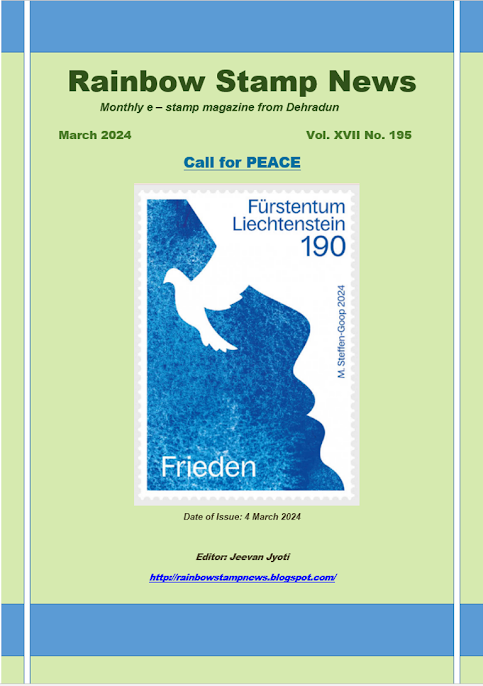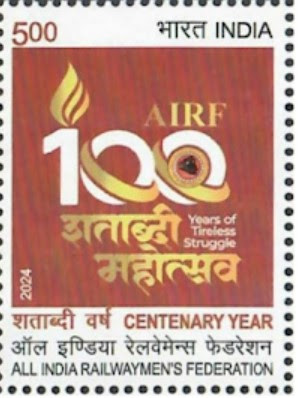2013 EUROPA Stamps Competition !
PostEurop presents the 2013 Europa stamps entries for the theme “Van of the Postman” in conjunction with PostEurop’s 20th Anniversary and declares the 2013 EUROPA stamps competition officially open!
Europa stamps emphasize the co-operation between postal operators, particularly in promoting philately to further contribute and raise public awareness on European common roots, culture and history as well as its common objectives.
From now till 31 August, it is now up to you (the voters) to vote for the most beautiful Europa stamp 2013.
For voting, Plz visit : http://www.posteurop.org/europa2013
World Heritage – China
- Pradip Kumar Malik
On 11th April 2013, the United Nations Postal Administration (UNPA) issued a set of six commemorative stamps on the theme "World Heritage - China". Since 1984, UNPA has been issuing stamps featuring World Heritage Sites and since 1997 this topic featured in the UN stamps every year. The World Heritage sites depicted on the stamps of the set issued this year are described hereunder.
First two stamps of this year’s set (images shown below) are issued from UNPA, New York in denominations of US$ 0.46 and US$ 1.10. UNPA has three offices located at New York, United States; Geneva, Switzerland and Vienna, Austria. New York office of UNPA issues stamps in denomination of US dollar, whereas the UNPA Geneva and Vienna issue stamps in the denominations of Swiss franc and Euro respectively.
The subject of first stamp of this commemorative set is Mogao Caves, situated at a strategic point along the Silk Route, at the crossroads of trade as well as of religious, cultural and intellectual influences, the 492 cells and cave sanctuaries in Mogao are famous for their statues and wall paintings, spanning a thousand years of Buddhist art.
Imperial Palace of the Ming and Qing Dynasties in Beijing is depicted on the other stamp. This remarkable architectural edifice offers important historical testimony to the history of the Qing Dynasty and to the cultural traditions of the Manchu and other tribes in the north of China.
Potala Palace at Lhasa is depicted over the 1.40 Swiss franc stamp issued from UNPA, Geneva. The Potala Palace, an administrative, religious and political complex, is built on the Red Mountain in the centre of the Lhasa valley, at an altitude of 3700 m. The complex comprises the White Palace and the Red Palace, with their ancillary buildings. The Potala, winter palace of the Dalai Lama since the 7th century AD, symbolises Tibetan Buddhism and its central role in the traditional administration in Tibet. The beauty and originality of its architecture, its ornate decoration and its harmonious integration in a striking landscape add to its historic and religious interest.
The other stamp features Mount Huangshan, known as "the loveliest mountain of China", was acclaimed through art and literature during a good part of Chinese history (the Shanshui "mountain and water" style of the mid-16th century). Today it holds the same fascination for visitors, poets, painters and photographers who come in pilgrimage to this enchanting site, renowned for its magnificent scenery made up of many granite peaks and rocks emerging out of a sea of clouds.
The stamps issued from UNPA, Vienna feature World Heritages namely – The Great Wall and Mausoleum of the first Qin Emperor.
The Great Wall: In about 220 BC, under Qin Shin Huang, sections of fortifications which had been built earlier were joined together to form a united defence system against invasions from the north. Construction continued up to the Ming dynasty (1368-1644), when the Great Wall became the world's largest military structure. Its historic and strategic importance is matched only by its architectural value.
Mausoleum of the first Qin Emperor: No doubt thousands of statues still remain to be unearthed on this archaeological site, not discovered until 1974. Qin, the first unifier of China, who died in 210 B.C., is buried, surrounded by the famous terracotta warriors, at the centre of a complex designed to mirror the urban plan of the capital, Xianyan. The small figures, all different, with their horses, chariots and weapons, are masterpieces of realism and also hold great historical interest.
: Pradip Kumar Malik - email : mallikphila@gmail.com


























.png)













No comments:
Post a Comment